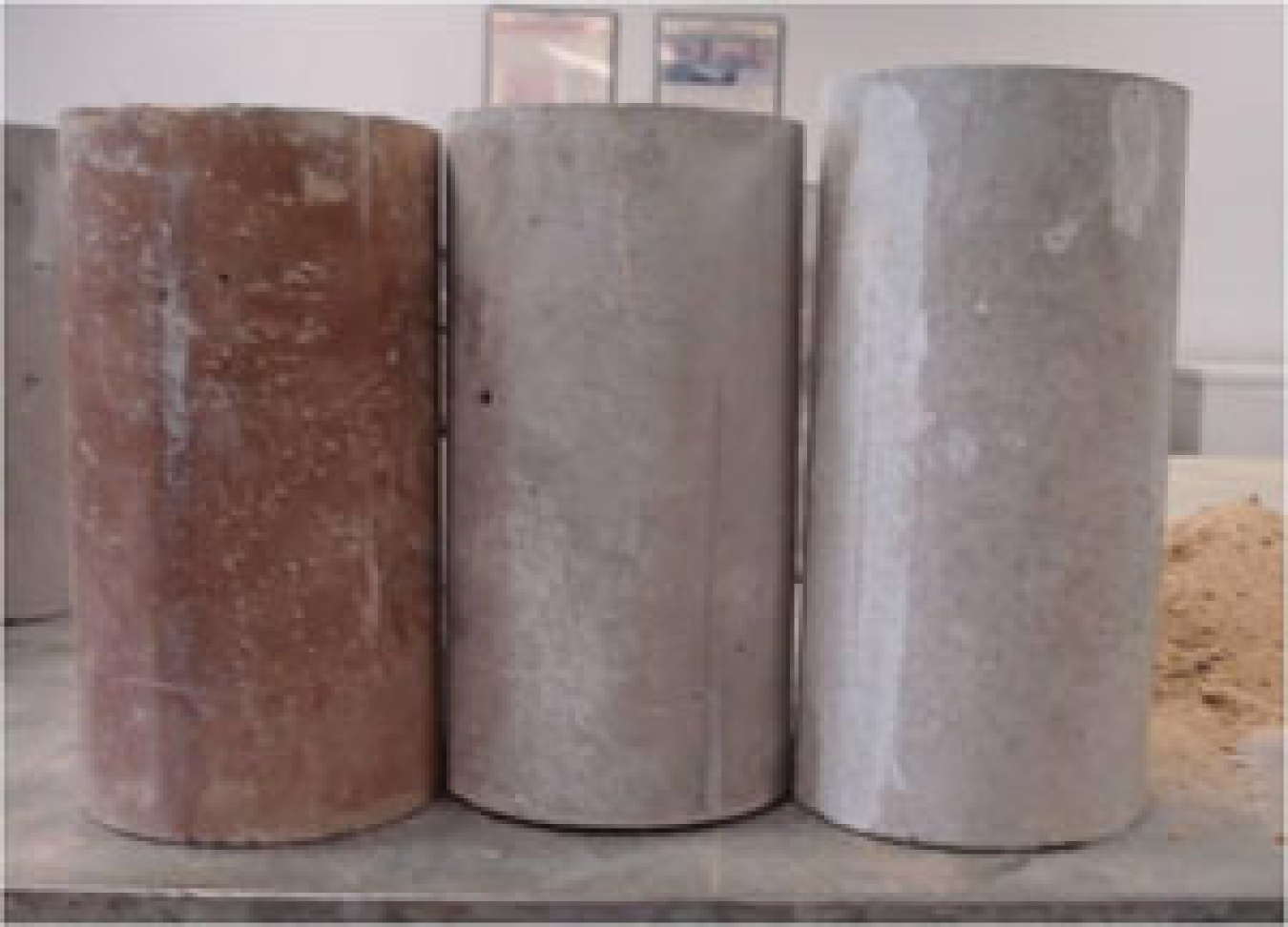-- This project is inactive --
The University of Arkansas, under the Thermal Storage FOA, is developing a novel concrete material that can withstand operating temperatures of 500°C or more and is measuring the concrete properties.
Approach
They are evaluating the concrete's performance with regard to temperature, heating rate, and heating/cooling cycles. The focus is not only on developing high-temperature concrete that can operate beyond 500°C, but also has superior material properties that can reduce the cost of the concrete.
The university is developing novel techniques of construction to increase the rate of heat transfer from the heat transfer fluid (HTF) to concrete and back, as well as reduce the difference in thermal expansion coefficient between the concrete and the reinforcement material. Other novel techniques that transfer the heat directly from the fluid to concrete without a pipe are also being investigated.
The cost of different methods of thermal energy storage (TES) is being evaluated and compared. The goals of the project are to reduce the cost of thermal energy storage from $25/kWth using concrete to the 2020 goal of costs below $15/kWhth and achieve a round trip efficiency >93%.

The University of Arkansas is developing a method for storing heat using packed beds of chemically inert materials, such as blocks of concrete, to decrease the cost of thermal energy storage.
Innovation
The use of concrete as a TES medium could allow for higher-temperature storage. There is an attractive simplicity to solid-state, sensible heat storage. However, the use of concrete also brings challenges, including material compatibility with HTFs, durability after extensive thermal cycling, and partial charge/discharge issues. In addition, it is likely that "specialty concrete" is necessary for TES applications, which could raise the cost.
Abengoa evaluated concrete as part of their TES award (GO18156) and determined that a concrete TES system (based on a DLR configuration) is not competitive with baseline storage configurations (2-tank molten-salt) and actually results in a significant increase in levelized cost of energy (~10%). By project end, the University of Arkansas intends to have developed a concrete to be used as a TES medium that can achieve the above cost goals.
Publications, Patents, and Awards
- J. Skinner, B. Brown, and R.P. Selvam (2011), "Testing of High Performance Concrete as a Thermal Energy Storage Medium at High Temperatures," Paper No. ES2011-54463, in Proceedings of ASME 2011 5th International Conference on Energy Sustainability, Washington, DC, August 7-10, pp. 723-728, ISBN: 978-0-7918-5468-6.
- E.E. John, W. M. Hale, and R.P. Selvam, "Development of a High-Performance Concrete to Store Thermal Energy for Concentrating Solar Power Plants," Paper No. ES2011-54177, in Proceedings of ASME 2011 5th International Conference on Energy Sustainability, Washington, DC, August 7-10, 2011, pp. 523-529, ISBN: 978-0-7918-5468-6.
Learn about other concentrating solar power research.

